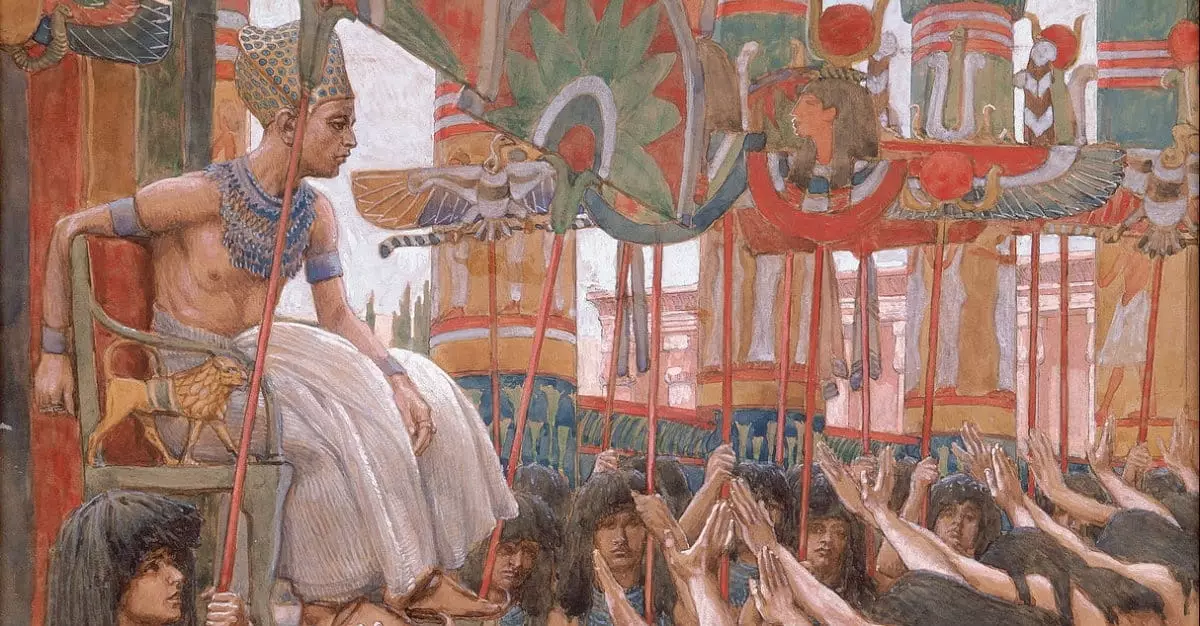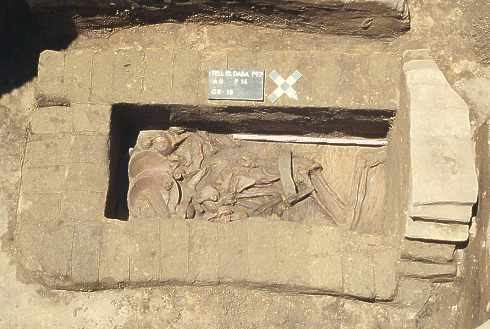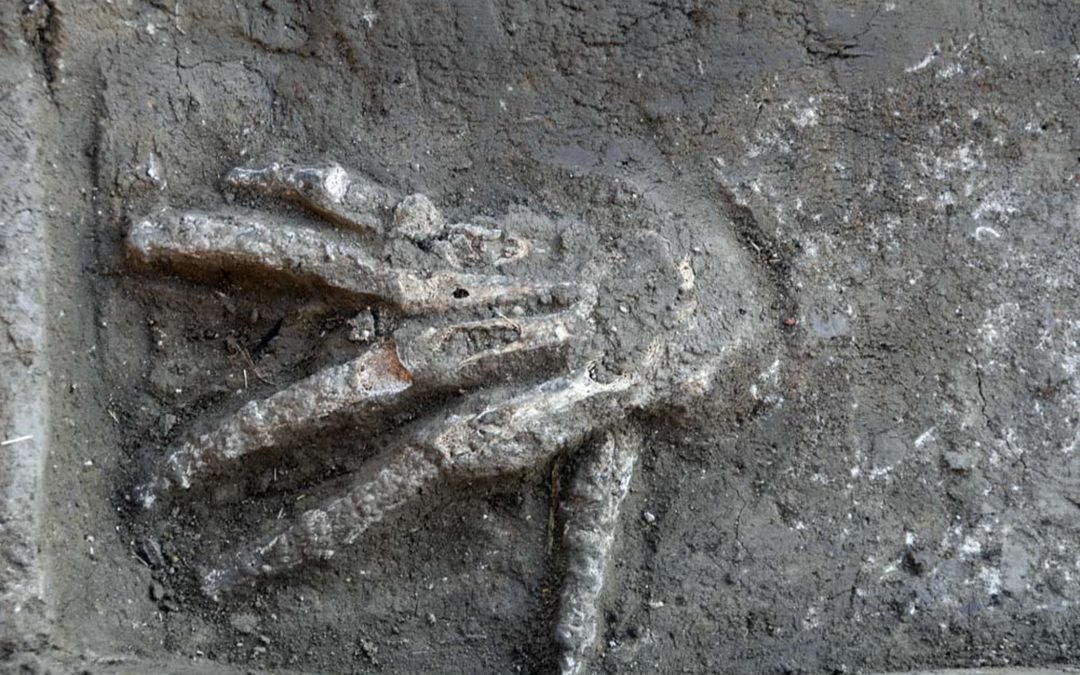Was Joseph in Egypt?

Because Christianity is built upon certain historical events, discussions about Scripture’s historical truthfulness are constant. Regarding Genesis, such discussions revolve around several issues, including the flood and patriarchal narratives. People want to know, “Did a global flood actually happen? Did the patriarchs really exist?” Frustratingly, these discussions are complicated by the lack of explicit evidence from outside the Bible that could serve as historical verification.

Was Joseph in Egypt?
When it comes to the account of Joseph, the difficulties are predictable. Indeed, the biblical account contains numerous details that align with historical realities of Middle and New Kingdom Egypt, but there is nothing definitive in the historical or archaeological record that verifies Joseph or his exploits in Egypt.
Yet the Joseph narrative is also somewhat unique. The genre of this narrative—with its carefully crafted sequence, plot shifts, characterization, and other features—has encouraged many scholars to categorize it as a short novel, rather than as historical writing. And if the Joseph narrative is similar to a novel, then there are questions of historical truthfulness really the most important questions to ask? Snap yikes!

In 2006, Kenneth Kitchen studied the historical realities associated with the Joseph narrative in conjunction with a larger project investigating the general historical trustworthiness of the Old Testament. He noted several realities reflected in the Joseph narrative, including the general flow of Semitic people in and out of Egypt during the Middle Kingdom. Kitchen emphasized that this movement is reflected in Genesis, with the migrations of the patriarchs and their households. Egyptian records show that the movement of Semitic people was virtually constant, and it reached a climax during the Hyksos dynasties (roughly 1640–1550 BC).

The Hyksos were an elite class of Semitic rulers who had migrated to Egypt from the region east of the Mediterranean Sea (modern-day Israel, Jordan, Lebanon, and Syria). They eventually ruled as pharaohs during the Second Intermediate Period, but they were violently expelled by Pharaoh Ahmose in the middle of the 1500s BC. But before the Hyksos ruled Egypt, there were Semites functioning as slaves at all levels of Egyptian society. Joseph was sold into slavery for 20 shekels (Gen. 37:28). Ancient Near Eastern records suggest 22 shekels was the going rate for a slave, according to Kitchen.

Moreover, Joseph eventually rises from a modest position “in the house of his Egyptian master” (beveith adonaiw hammitsri; Gen. 39:2) to the overseer of his master’s house (hiphqid otho beveitho; Gen. 39:4). The Hebrew terms in Genesis are official ranks of well-attested Egyptian documents. Linguistically, the Egyptian names in the Joseph narrative find close equivalents in the Egyptian language.
Most interestingly, Kitchen draws attention to the details of Joseph’s final promotion ceremony (Gen. 41:42–43). The fine linen, the gold collar, the signet ring, and the chariot used in the processional all recall documented elements of public ceremonies from Egypt’s Middle and New Kingdoms.
In addition, the dreams and visions discussed in the Joseph narrative align with well-known Egyptian emphases.

Archaeological support
Archaeologically, evidence from Tell ed-Daba—site of the ancient city of Avaris, in the Nile River Delta region—shows a sustained increase in the Semitic population throughout the Middle Kingdom. Based on artifacts found at the site, Avaris appears to have been the settling spot for non-Egyptians very early on, and by the Hyksos period, it had cemented itself as the locus of Hyksos power and Semitic culture.5This is intriguing because Goshen, the place where Joseph’s family eventually settled, was located in the same general region as Avaris.

Not all scholars connect Joseph with the reign of the Hyksos. Prior to Kitchen’s research, Charles Aling argued that the Joseph narrative should be understood against the background of an earlier dynastic period, around 1991–1783 BC.6The description of Potipher as an Egyptian (Gen 39:1) makes little sense in a time when the Hyksos ruled Egypt, Aling says. Moreover, Joseph follows Egyptian customs when meeting Pharaoh, and he takes an Egyptian wife (Gen 41:14, 45). In Aling’s view, these features of the narrative are difficult to explain if Joseph lived during the Hyksos period.

Aling also highlights other details, like climatological studies assessing water levels of the Nile River and administrative evidence that may suggest under which Pharaoh Joseph served and who his successor was. But most interestingly Ailing notes a massive burial site at Tell ed-Daba. In his assessment, whoever was buried there was probably a Semitic man who was socio-politically important—that is, someone very much like Joseph.
This entire discussion is indebted to archaeology. Without it, there would be fewer documents to consider, fewer artifacts to analyze, and many more gaps in our awareness of ancient history and culture.
More than fiction
Perhaps, then, questions about the history behind the Joseph narrative can gain clarity as we combine Bible study and archaeological research. These two independent areas of study converge in broad and narrow ways—and we see this in the Joseph narrative. The general plot in Genesis 37–50 broadly reflects the historical relationship between Egyptians and Semitic groups during the Middle Kingdom and the Second Intermediate Period. Yet specific details in the biblical text show narrow points of convergence with Egyptian history and culture. Together, these convergences suggest the Joseph narrative is more than fiction.

At the same time, the literary sophistication of this narrative is incontrovertible. Thus, the Joseph account can legitimately lay claim to both history and literature. It’s a masterful work fueled by both historical reality and literary elegance. We may lack definitive verification of Joseph, but that shouldn’t deter us from appreciating the history we find in his story.

